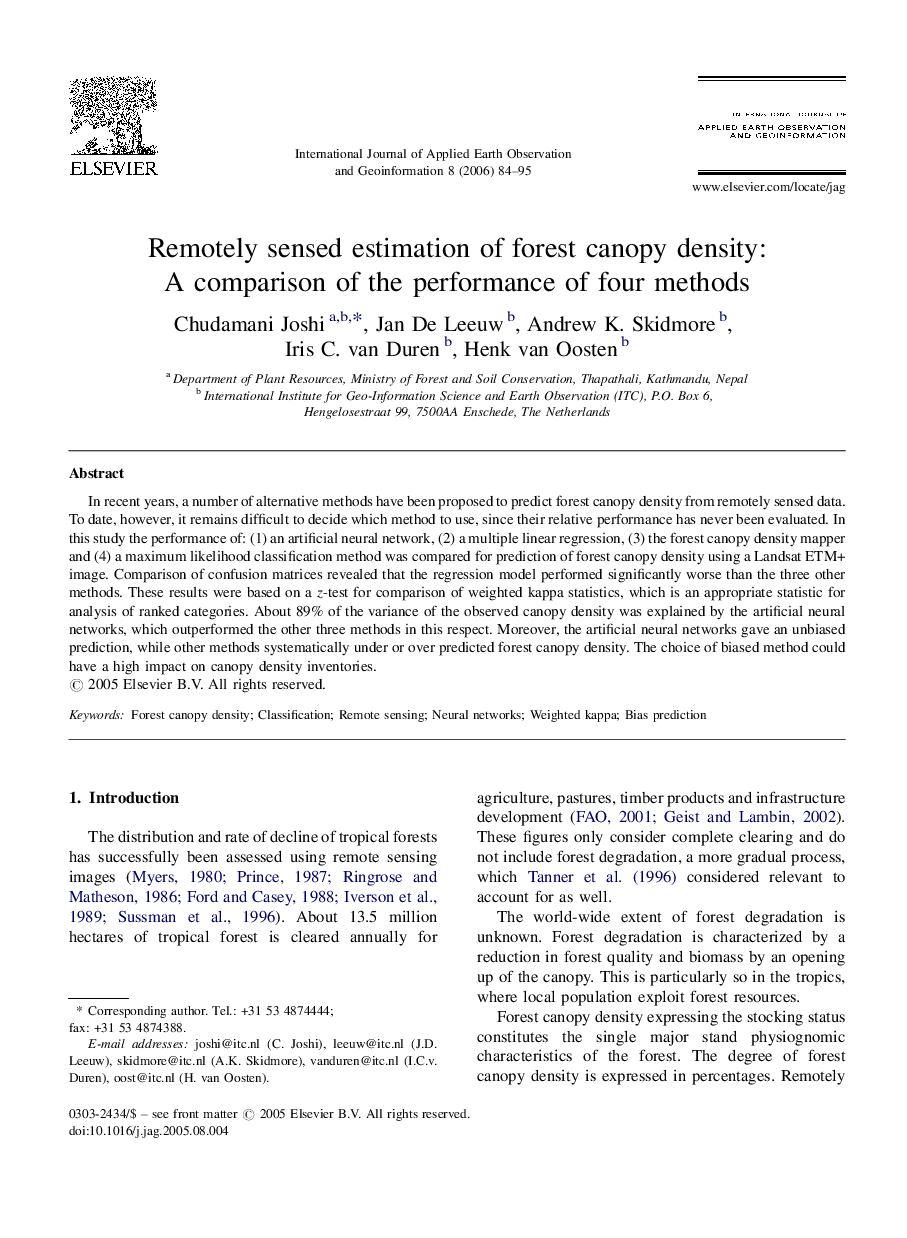| Article ID | Journal | Published Year | Pages | File Type |
|---|---|---|---|---|
| 4465401 | International Journal of Applied Earth Observation and Geoinformation | 2006 | 12 Pages |
In recent years, a number of alternative methods have been proposed to predict forest canopy density from remotely sensed data. To date, however, it remains difficult to decide which method to use, since their relative performance has never been evaluated. In this study the performance of: (1) an artificial neural network, (2) a multiple linear regression, (3) the forest canopy density mapper and (4) a maximum likelihood classification method was compared for prediction of forest canopy density using a Landsat ETM+ image. Comparison of confusion matrices revealed that the regression model performed significantly worse than the three other methods. These results were based on a z-test for comparison of weighted kappa statistics, which is an appropriate statistic for analysis of ranked categories. About 89% of the variance of the observed canopy density was explained by the artificial neural networks, which outperformed the other three methods in this respect. Moreover, the artificial neural networks gave an unbiased prediction, while other methods systematically under or over predicted forest canopy density. The choice of biased method could have a high impact on canopy density inventories.
